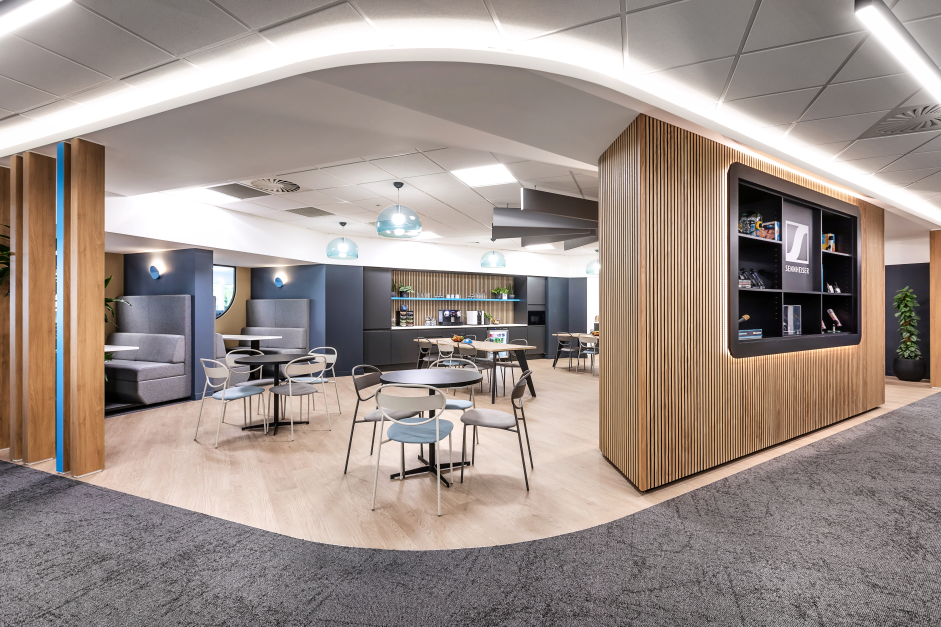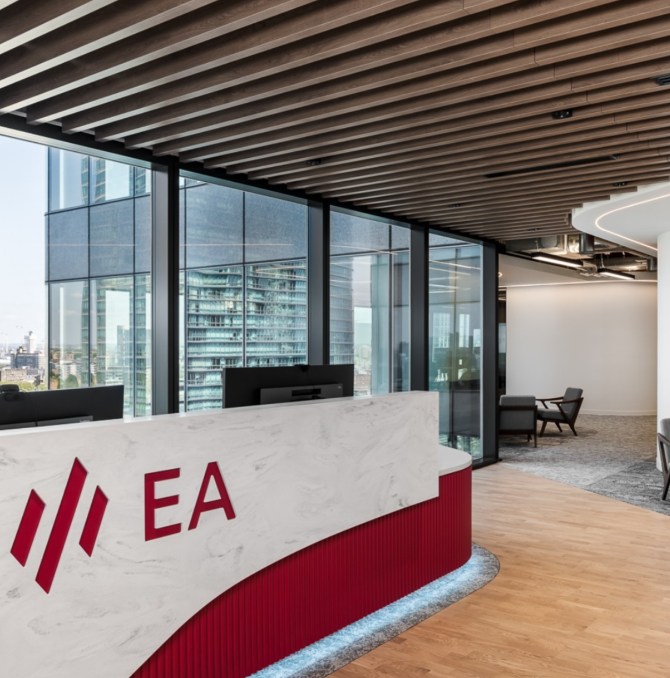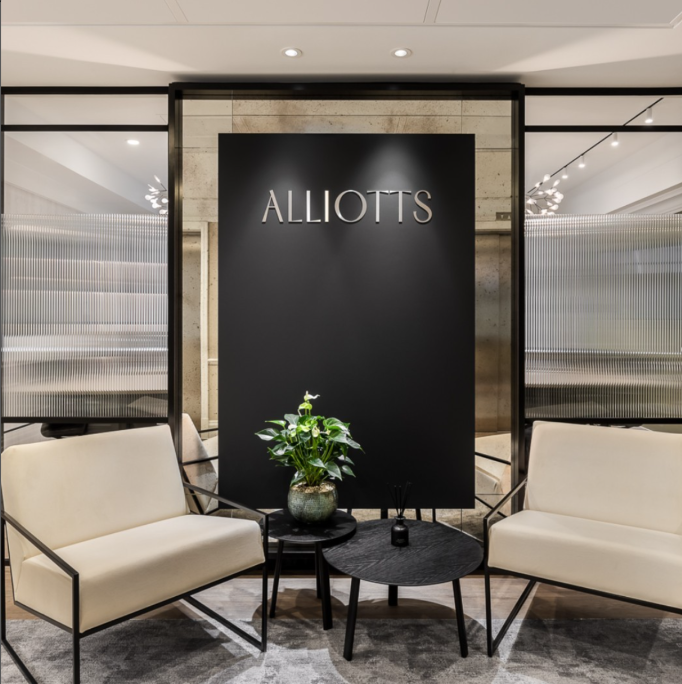
How a Post-Pandemic Positive Workplace can Reignite your Company Culture
It’s been a long 12 months of working from home for many with the initial weeks of banana bread and Tiger King in lockdown one feeling like a distant, perhaps even fond memory. Within this seemingly, at times, endless period of uncertainty, there is hope in sight. So the challenge of opening up the workplace again is rearing its head fast. It’s important to acknowledge it isn’t about how to get your team to come back, even if it is only one day a week; it’s how to revive the company culture. Thanks to Zoom fatigue and a severe lack of time in your branded workplace, employees have slowly but steadily found themselves far removed from once-thriving company cultures. How can you reignite this ever-extinguishing flame? A new, post-pandemic workplace might just do the trick.
What is company culture and why is it important?
Company culture is what inspires your employee’s loyalty, and it’s made of various factors. But the important ones your employees will be on the lookout for is beliefs, experience and environment. Your organisations’ beliefs or values will reflect the culture it’s trying to create, and in turn, foster that within your colleagues. One example of a belief is transparency. An organisation that boasts this, will celebrate this belief by creating open workspaces and ensuring open communication is upheld at all times. Experience is a broader subject in terms of company culture, and it looks at everything from what it’s like to work in your organisation to what types of perks you might offer. For inspiration in this segment of company culture, many look to Google for their laid-back way of working, or Spotify for their ‘work anywhere in the world’ philosophy. However, many get it confused with the environment, which is much more than beanbags and a ping pong table.
Environment is the workplace. It’s the beating heart of your company culture, and it does a great job of encouraging your colleagues to express those positive feelings created by experience and beliefs. Your workplace does this by presenting your team with visual, and even tangible, signifiers of what your workplace culture is. This can be anything from the layout of your office to the furniture you’ve selected, often the artwork on the walls. For example, Pixar purposely built their workspace to include a central open atrium naturally allowing colleagues to bump into each other in informal, but meaningful, ways which contribute to their culture of collaboration. Environment is one of the most important touchpoints when communicating your company culture, and that’s never been more obvious than now.
But do what if my team do not want to come back to the office?
Yes, some employees may never want to work in the office again. However, in a study from YouGov, it’s clear to see they’re in the minority. 39% of respondents advised they wanted a mix of working from home and the office once the pandemic is over, and a further 39% said they never wanted to work from home again (YouGov). Considering 78% of workers want some form of a workplace to return to in the future, it’s safe to say the workplace environment is proving to be more alluring than the overload of early LinkedIn polls would have you believe.
How to foster your company culture in a post-pandemic workplace
Before you draw up the blueprints and get to work on changing your workplace, it’s important to take a step back and ask yourself, and your team, some important questions. To create an environment that your team wants to return to, you’re going to need to have concrete answers to some important questions.
- What do your employees want now?
In the last 12 months, there’s been a lot of chatter about “the future” and what it will look like. Initially, team members might have sung their praises on the topic of working from home. However, those same people might have faced a fair few challenges in the following months (home-schooling, anyone?) and may have changed their outlook on the matter.
Therefore, a great first step is sharing a simple poll with your team members asking whether they’d prefer to work from home, the office, or both. Whatever their answers are, they’ll help shape your future workplace.
- What do your findings mean?
Now you have your answer to question 1, it’s time to dig a little deeper. Discovering the majority want to work partly from home and partly from the office gives you the opportunity to find out why.
Invite your team members to open floor talks, or speak to them one on one, to find out why they feel that way. For some, they may be in dire need of peace and quiet from the kids. For others, it could be as simple as missing the social aspect of the workplace. Whatever their answers are, they will give you an insight into what your workplace needs to feature to best reflect your company’s culture.
- How can you best respond to your team’s needs?
We believe a workplace should never just be a blank room with rows of desks. However, it also shouldn’t be a collection of things you think you should have in your office. Assess your workflows. Depending on your findings so far, you might need to consider creating noise-reducing hubs or losing your strict desk policy to create a hot-desking space in its place to encourage socialising and skill sharing.
- Is your current workplace fit for re-opening?
Now you know how your team feels, what they want, and how you can best serve them, it’s time to take a scrutinous look at your existing workplace. You might find you can adapt your space, it may need a complete makeover, or you may even find you could downsize. Whatever you find during this process, make sure to keep your team members and the culture you’re trying to foster in mind. Swapping around the desks and putting a pot plant in the middle of the room will only go so far as our Positive Workplace model explains.
Your post-pandemic workplace awaits
You’ll likely find, through these steps, that your company culture is waning thanks to the void of the workplace. Without the visual and tangible cues like branding, exciting places to meet and tailored layout reminding us of what organisations stand for, employees are understandably becoming disengaged. So, ahead of reopening your workspace’s doors, take time to consider the impact Covid has had on your workplace culture, and consider what steps you’ll need to take to revive it once more. Both your team members and your bottom line will thank you for it in the post-pandemic world. Get in touch with us to find out how we can help you.













Our Core Values are what make us Blue Jelly.
We are Ambitious
Highly driven, forward thinkers who won’t shy away from a challenge. Bringing big ideas to the table and making them a reality. Always striving to be the best that we can be.
See more at www.bluejelly.net
#WeAreAmbitious #PlacesWherePeopleWantToWork #WorkplaceDesignandBuild #ThinkBigger